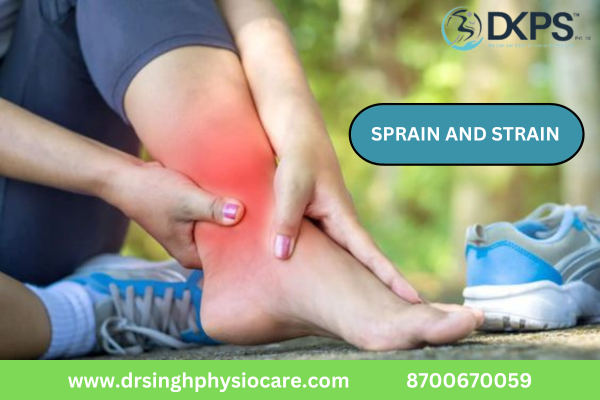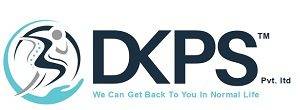- Home
- About Us
- DKPS Dealing
- BLOG
- Delhi NCR
- Delhi
- Physiotherapy at Home Near Me | Physiotherapist in South Delhi
- Best Chiropractor in Delhi
- Physiotherapist in Delhi
- Cupping Therapy in Delhi
- Home Nursing Services in Delhi
- Needle Therapy for Back Pain
- Sports Injury Physiotherapy
- Best Physiotherapist Visit at Home in Rohini Sector 24
- Physiotherapy at Home In Rohini Sector 9 |
- Physiotherapist in Pitampura | Physiotherapy at Home in Pitampura
- Physiotherapy at home in Rohini sector 29
- Physiotherapist in Paschim Vihar
- Physio home visit | Home Visit Physiotherapy |
- Physiotherapist in Saket | Best Physiotherapist in Saket |
- Physiotherapist In Janakpuri | Best Physiotherapist in Janakpuri |
- Best Physiotherapist in Punjabi Bagh | Punjabi Bagh Physiotherapist |
- Best Physiotherapist Service at Home in Dwarka, Delhi
- Best Physiotherapist in Chandigarh at Home Visit
- Faridabad
- Gurugram
- Noida
- Best Physiotherapy Gorakhpur
- Best Physiotherapist in Lucknow | Physiotherapist in Lucknow near me |
- Delhi
- Mumbai
- Delhi NCR
- Department
- Doctors
- Gallery
- Packages
- Contact Us
- Home
- About Us
- DKPS Dealing
- BLOG
- Delhi NCR
- Delhi
- Physiotherapy at Home Near Me | Physiotherapist in South Delhi
- Best Chiropractor in Delhi
- Physiotherapist in Delhi
- Cupping Therapy in Delhi
- Home Nursing Services in Delhi
- Needle Therapy for Back Pain
- Sports Injury Physiotherapy
- Best Physiotherapist Visit at Home in Rohini Sector 24
- Physiotherapy at Home In Rohini Sector 9 |
- Physiotherapist in Pitampura | Physiotherapy at Home in Pitampura
- Physiotherapy at home in Rohini sector 29
- Physiotherapist in Paschim Vihar
- Physio home visit | Home Visit Physiotherapy |
- Physiotherapist in Saket | Best Physiotherapist in Saket |
- Physiotherapist In Janakpuri | Best Physiotherapist in Janakpuri |
- Best Physiotherapist in Punjabi Bagh | Punjabi Bagh Physiotherapist |
- Best Physiotherapist Service at Home in Dwarka, Delhi
- Best Physiotherapist in Chandigarh at Home Visit
- Faridabad
- Gurugram
- Noida
- Best Physiotherapy Gorakhpur
- Best Physiotherapist in Lucknow | Physiotherapist in Lucknow near me |
- Delhi
- Mumbai
- Delhi NCR
- Department
- Doctors
- Gallery
- Packages
- Contact Us
Archives
- Home
- Archives

What is Sprain and Strain ?
What is Sprains
A sprain is an indication of a ligament, the tissue that joins the bones at joints, straining or rupturing.
Common Symptoms
– Muscle or joint pain
– Swelling – Stiffness in the joints
– Skin discoloration, particularly from bruises
– Commonly Affected Joints: Sprains can occur in other joints in addition to the ankles.
Causes of sprain
Usually the result of a joint being twisted or wrenched.
What is Strains
An injury to a muscle or tendon, the tissue that joins muscles to bones, is referred to as a strain.
Common Symptoms
– Pain in the muscles – Swelling – Restricted range of motion – Muscle spasms
– Causes: Over strained, force, or usage are common causes.
Treatment for both Strains and Sprains
– R.I.C.E. is a popular initial treatment strategy that stands for Rest, Ice, Compression, Elevation.
– Rest: Give the injured area a chance to heal and avoid applying pressure or weight to it.
– Ice: Use ice to numb discomfort and lessen swelling.
– Compression: To reduce swelling, apply compression bandages.
– Elevation: To reduce swelling, keep the damaged area elevated.
Differences in Healing Period
– Soft Tissue Healing: The majority of soft tissue injuries require several weeks to recover. Severe sprains or strains could require more time.
– Getting Medical Advice: – Professional assessment: It’s critical to get a professional medical assessment if you think you may have a serious sprain or strain or if your symptoms don’t go away.
– Imaging Tests: To determine the extent of the injury, medical professionals occasionally advise imaging tests like MRIs or X-rays.
– Physiotherapy: For the recovery of sprains and strains, physiotherapy can be quite important. For the purpose of regaining your strength and flexibility, a physiotherapist can help you with exercises and treatments.
– Pain Management: Over-the-counter painkillers may be prescribed for pain relief, but it’s crucial to take them exactly as prescribed and speak with a medical expert if you have any concerns.
Prevention:
– Appropriate Warm-up and Stretching: To prepare the muscles and joints for physical activity, perform suitable warm-up exercises beforehand.
– Strengthening Exercises: To increase muscle strength and resilience, include strengthening exercises on a regular basis in your programme.
– Appropriate Technique: To lower the chance of injury, use appropriate techniques when participating in sports and other physical activities.
– Proper Footwear: Make sure you’re wearing proper footwear, especially when jogging or leaping.
Medical Evaluation: Obtain a qualified medical examination, particularly in cases of serious injuries.
Physiotherapy: By assisting in the restoration of strength and flexibility, physiotherapy is a vital component of the rehabilitation process for sprains and strains.
Go back to playing
Before returning to competition, athletes should undertake a gradual, under supervision rehabilitation programme to make sure the injury has completely healed and to avoid re-injury.
Recall that the data presented here is generic in nature and may differ for specific circumstances. For individualized guidance and care, athletes with sports-related injuries should speak with medical professionals.
Managing a child’s sprain or strain
Children’s sprains and strains can be treated with a combination of first aid techniques, appropriate care, and, in certain situations, visiting a doctor. It should be noted that different injuries have varying degrees of severity, necessitating different approaches to management. Here’s a general guide:
First Aid for Children’s Sprains and Strains:
1. Rest:
– To stop additional harm, urge the kid to rest the hurt limb or area.
– Avoid putting weight on the injured area.
2. Ice:
– For 15 to 20 minutes, apply an ice pack wrapped up in a thin cloth to the affected area.
– To reduce swelling, repeat every 2 to 3 hours for the first 48 hours.
3. Compression:
– To offer support and lessen edoema, apply a compression bandage.
– To prevent problems with circulation, take care not to wrap it too tightly.
4. Elevation:
– To reduce swelling, if at all possible, elevate the affected limb.
– Employ cushions or pillows to provide support to the impacted region.
Pain Management:
1. Over-the-Counter Painkillers:
– Ibuprofen or paracetamol can be used to relieve pain in children if the dosage is suitable for their age.
– Adhere to the recommended dosage according to the child’s age and weight.
2. Avoid Heat:
– Warm compresses or heat packs should not be used during the initial stages of the condition as they may exacerbate swelling.
Medical Assessment
1. Speak with a Healthcare Professional:
– Seek medical attention if the injury is severe or if the pain, swelling, or restricted movement lasts.
– A medical professional can determine the severity of the injury and suggest the best course of action.
Exercise Therapy:
1. Rehabilitation activities:
– To regain strength and flexibility, perform mild rehabilitation activities as directed by a medical specialist.
– A significant part of the healing process can be played by physiotherapy.
Go back to the activities:
1. Slow Reentry:
– The child’s activities can be gradually continued once their symptoms have improved.
– Follow any advice given by physicians for getting back into sports or other physical activity.
Prevention:
1. Safety precautions: – Promote wearing appropriate protective gear when playing sports or engaging in physical activities; – Stress correct form and technique to lower the chance of harm.
2. Warm-Up and Stretching: – Before involving the youngster in physical activity, incorporate warm-up exercises and stretching into their routine.
3. Hydration:
– Make sure you are properly hydrated, as weariness and cramping in the muscles can be caused by dehydration.
Medical Attention:
Get help as soon as possible if your kid is experiencing significant pain, ongoing swelling, difficulty bearing weight, or if you have any concerns about the nature of the injury. In order to ensure proper diagnosis and treatment, it is crucial to consult with healthcare specialists, particularly when fractures or more serious injuries are involved.
Whenever possible, heed the advice of medical professionals regarding the child’s particular needs, as each case is unique.
Conclusion:
Even while the R.I.C.E. method can frequently be used at home to treat moderate sprains and strains, it’s crucial to see a healthcare provider for a proper diagnosis and advice, particularly if the injury is more severe or if symptoms continue. This information is broad in nature and should not be used in place of expert medical advice. Since every person’s circumstances are different, medical professionals can provide tailored advice based on a careful evaluation.
BEST PHYSIOTHERAPIST IN LOCATION-
Greater Noida- Dr Zubair Saifi | Noida- Dr Mohd Abuzar | Omicron Greater noida- Dr Lavi Saran | Ghaziyabad- Dr Arpit Shakya | Shahadara- Dr Geetika | Noida Sector 1 – Dr Kajal Yadav | Gour City- Dr Asif Alam | Mandi House Delhi- Dr Arfin | Okhala- Dr Kahkasha khan | Dwarka- Dr Swati | Paschim Vihar – Dr Rahul | Janakpuri- Dr Bhawana Singh | Rohini Sector 25 – Dr KP Singh | Pitampura- Dr Himanshu Roy | Rohini Sector 18- Dr Komal Rohini Sector 3- Dr Himanshu Roy | Rohini sector 9- Dr Komal | Rohini Sector 22- Dr Ira Jamwal | Rohini Sector 13- Dr Kp Singh | Munirka South Delhi- Dr Anurag | Mumbai- Dr Nishi |
